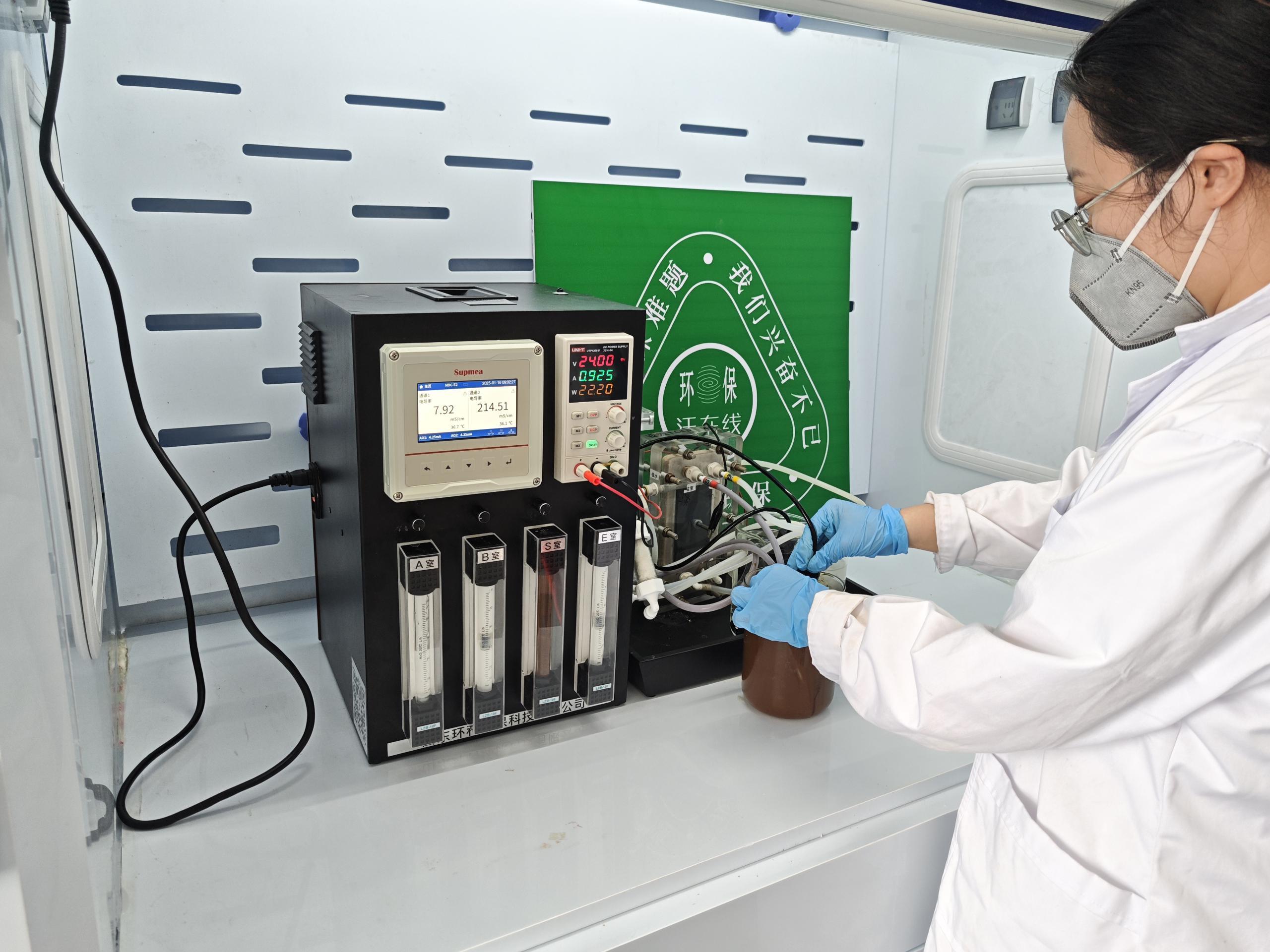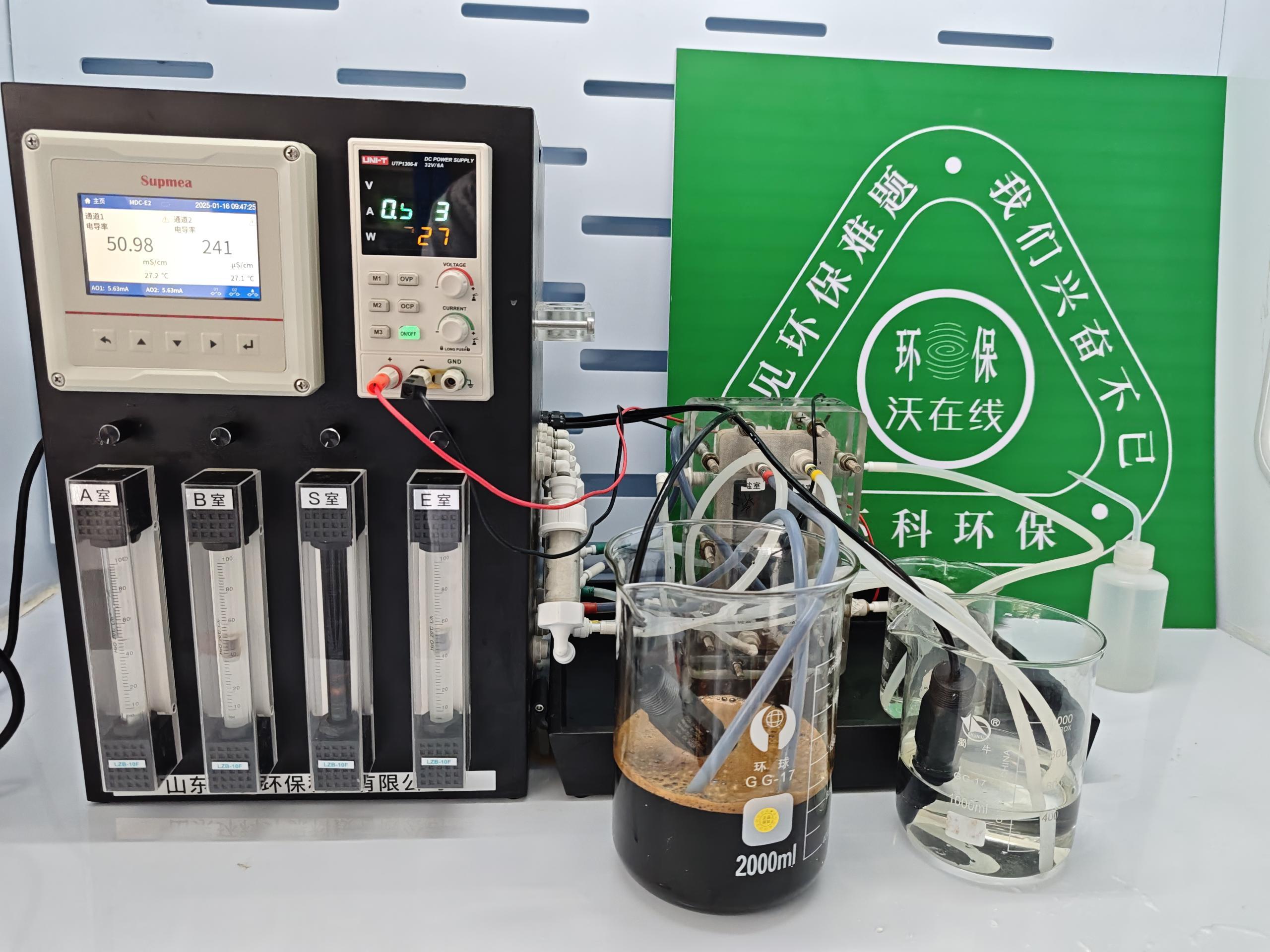01
2025
-
10
Sodium sulfate bipolar membrane conversion to acid and alkali: Innovative process leads a new direction for resource utilization
Author:
Sodium sulfate bipolar membrane conversion to acid and alkali: Innovative process leads a new direction for resource utilization
In industrial production, sodium sulfate is a common by-product or waste. Traditional treatment methods often have problems such as low efficiency, high cost and environmental pollution. With increasingly strict environmental protection requirements and the deepening of the concept of resource recycling, how to efficiently and environmentally friendly handle sodium sulfate has become an urgent problem to be solved. Bipolar membrane electrodialysis technology, as a new type of ion-exchange membrane separation technology, provides a new way for the resource utilization of sodium sulfate. It can convert sodium sulfate into sulfuric acid and sodium hydroxide, achieving the transformation of waste into treasure.
I. Principle of Bipolar Membrane Electrodialysis Technology
Bipolar membranes are a special type of ion-exchange membrane composed of a cation exchange layer, an intermediate interface hydrophilic layer (catalytic layer), and an anion exchange layer. Under the action of a direct current electric field, the water in the intermediate interface layer of the bipolar membrane is ionized, generating hydrogen ions and hydroxide ions, which respectively pass through the cation membrane and the anion membrane, obtaining hydrogen ions and hydroxide ions on both sides of the membrane as the ion sources of H⁺ and OH⁻. Taking advantage of the characteristics of bipolar membranes in generating H⁺ and OH⁻, by combining them with other anion and cation exchange membranes to form a bipolar membrane electrodialysis system, salts in aqueous solutions can be converted into corresponding acids and bases without introducing new components.
During the process of acid and base conversion by sodium sulfate bipolar membrane, sodium sulfate solution enters the salt chamber, and sulfate ions migrate through the anion membrane to the acid chamber. They encounter the cation surface of the bipolar membrane. As the cation surface is negatively charged, the sulfate ions cannot continue to migrate and remain in the acid chamber, where they combine with the hydrogen ions decomposed from the cation surface of the bipolar membrane to form sulfuric acid. Meanwhile, under the action of a direct current electric field, the anion surface of the bipolar membrane continuously decomposes hydroxide ions, which combine with sodium ions in the alkali chamber to form sodium hydroxide.


Ii. Process Flow of acid and alkali Production by bipolar membrane conversion of sodium sulfate
(1) Solution preparation and pretreatment
Solid sodium sulfate decahydrate is dissolved in pure water to form a sodium sulfate solution. Then, sodium carbonate and sodium hydroxide are added to the sodium sulfate solution. Sodium carbonate and sodium hydroxide react with the metal ions in the sodium sulfate solution to form solid precipitates. The pH value of the solution after the reaction is adjusted to 8-10. Then, the solution undergoes a filtration process to remove solid impurities. The filtrate is further treated by an advanced oxidation process to eliminate organic impurities. The solution treated by the advanced oxidation process undergoes secondary filtration. First, it passes through activated carbon to adsorb impurities, and then through resin to adsorb calcium and magnesium ions in the solution. Finally, the adsorbed solution is filtered through a precision filter to ensure that the content of various ions and impurities in the filtrate meets the design requirements for entering the bipolar membrane electrodialysis.
(2) Bipolar membrane electrodialysis treatment
The qualified filtrate enters the bipolar membrane electrodialysis device for acid and alkali production operations. In the device, the sodium sulfate solution passes through the salt chamber, and the generated sulfuric acid solution, sodium hydroxide solution and dilute brine respectively enter the corresponding collection tanks. Dilute salt water can be returned to the salt dissolving process for concentration, achieving the recycling of resources.
Iii. Technological Advantages
(1) High resource utilization rate
Through bipolar membrane electrodialysis technology, sodium sulfate can be almost completely converted into sulfuric acid and sodium hydroxide, with a resource utilization rate of over 96.8%, and even almost reaching zero emissions. Even if there is the remaining low-concentration sodium sulfate high-salt wastewater, it can be further concentrated through traditional electrodialysis and then enter the bipolar membrane double decomposition multi-chamber electrodialysis, making the resource utilization rate almost reach 100%.
(2) Low production cost
This technology generates no by-products during the preparation process and does not require additional chemical reagents, thereby reducing production costs. Meanwhile, the produced sulfuric acid and sodium hydroxide can be used by the factory itself, further reducing the operating costs of the factory.
(3) Remarkable environmental benefits
Compared with the traditional sodium sulfate treatment method, the bipolar membrane electrodialysis technology avoids the discharge of waste and environmental pollution problems, conforms to the development concept of green chemistry, and has good environmental protection benefits.
(4) Simple and easy to operate and control
The bipolar membrane electrodialysis device has a simple and compact structure, small volume, high wastewater treatment efficiency and large wastewater treatment capacity. The preparation process is simple, the operation parameters are easy to control, and it is convenient for industrial application.
Iv. Challenges and Prospects
(1) Technical challenges
Although the bipolar membrane conversion technology of sodium sulfate for acid and alkali production has many advantages, it still faces some technical challenges. For instance, the performance and stability of bipolar membranes need to be further enhanced to reduce the cost of the membranes and extend their service life. How to reduce the content of impurity ions in acidic and alkaline products and improve the purity of the products; And how to optimize process parameters, improve preparation efficiency and product quality, etc.
(II) Application Prospects
With the continuous advancement of technology and the continuous development of bipolar membrane technology, its application prospects in the field of sodium sulfate resource utilization will be even broader. In the future, the coupling application of bipolar membrane electrodialysis technology with other technologies can be further explored, such as its combination with ion exchange technology, membrane separation technology, etc., to achieve more efficient and environmentally friendly sodium sulfate treatment. At the same time, efforts should be made to enhance the industrial promotion of bipolar membrane technology, reduce equipment investment and operating costs, enable more enterprises to benefit from this advanced technology, and promote the sustainable development of industry.
The bipolar membrane conversion technology of sodium sulfate for acid and alkali production provides a green, efficient and innovative method for the resource utilization of sodium sulfate. Through continuous technological innovation and optimization, this technology is expected to play a greater role in the industrial field, achieve the resource recycling and utilization of waste, and promote sustainable economic development.
Related Products
Sodium sulfate bipolar membrane conversion to acid and alkali: Innovative process leads a new direction for resource utilization
2025-10-01
Separation, purification and wastewater resource utilization technology of phenylalanine based on electrodialysis
2025-09-27
Electrodialyzation-driven proline desalination: Optimized and Green Pathways
2025-09-26
Electrodialysis: Practical Application of Glycine Separation from Salts
2025-09-25
Huanke Environmental Protection Technology
HOTLINE:
Address:Optoelectronic Industry Accelerator in Weifang Hi-Tech Zone, Shandong Province, China
Contact:Zhang Gong
WhatsApp:+8619953608211
Email:eco.eqpt@gmail.com


Consult

TikTok
Copyright © 2023 Shandong Huanke Environmental Protection Technology Co., Ltd
